Richard’s
Picks
A
Behind-the-Scenes Tour of the 2004-5 Carnegie
International with Carnegie Museum
of Art Director Richard Armstrong
By Lorrie Flom
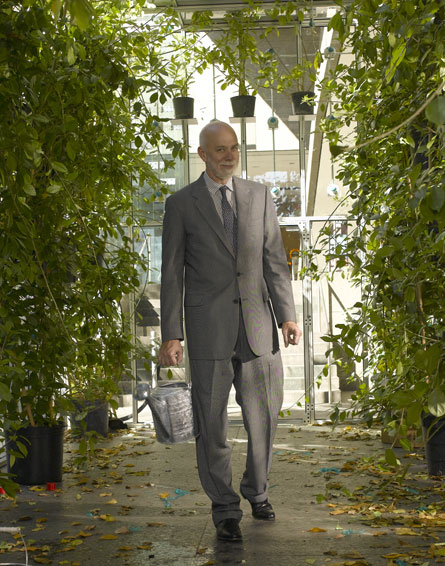 |
Photo:
Ric Evans |
The 2004-5 Carnegie International
brings the world of contemporary art to Pittsburgh,
albeit through the discriminating eyes of Curator
Laura Hoptman. “Laura has a taste for
highly charged and contemplative work,”
says Richard Armstrong, the Henry J. Heinz II
Director of Carnegie Museum of Art. “She’s
interested in a close textual read.” In
comparing the current exhibition to the last
International, Armstrong says, “The
1999 International was physical and kinetic,
and was dealing with public concerns. This show
is more internal and calls for close inspection.”
He adds, “Frankly, many of the works in
this International are grappling with things
you might think of as private concerns.”
Although some works are whimsical
and others purely abstract, a number of works
explore or comment on the entire range of human
emotions—from falling in love (Carsten
Höller’s Solandra Greenhouse)
to desire (Philip-Lorca diCorcia’s stark
photographs) and ecstasy (Katarzyna Kozyra’s
Rite of Spring video installation)
to religious fervor (Rachel Harrison’s
Perth Amboy photographs) to the struggles
of societal outcasts (Kutlug Ataman’s
Kuba). Throughout the exhibition, the
media vary as well, ranging from small, intricate,
ceramic works to massive, wall-sized murals.
In December, the Museum of Art’s Collections
Committee will meet and may consider purchasing
a few pieces from the exhibition. Following
is a close look at some of the works that Armstrong
says, “are not to be missed.”
_________________________________________________________________

Photo:
Ric Evans
Kutlug Ataman
The first stop on Armstrong’s tour is
Kutlug Ataman’s 40-channel video installation,
Kuba, winner of the prestigious Carnegie Prize.
The gallery is filled with 40 televisions on
stands; they simultaneously play interviews
with 40 residents of a shantytown outside of
Istanbul. While vsitors initially hear the interviews
as a cacophonous jumble of humanity, they are
invited to sit and watch the individual works.
Armstrong says that one of Andrew Carnegie’s
original goals with the Carnegie International
was to improve international goodwill, and
Kuba continues that tradition. “This
work is powerful and timely,” he says.
“It personalizes Islamic people at a time
when they are sometimes being demonized here
in the United States.”
_________________________________________________________________
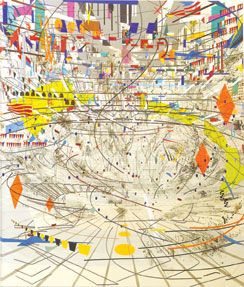
Photo:
Ric Evans
Julie
Mehretu
Another stop on Armstrong’s gallery tour
is a look at Ethiopian-born, American artist
Julie Mehretu’s large canvases in acrylic
and ink. “These works include spatial
explosions,” says Armstrong, of the energetic
canvases that combine the precision of black-and-white
architectural drawings and the freedom of brilliant
fireworks. “Overall, these works are about
the complexities of everyday living,”
he says, gesturing toward the piece titled Congress.
_________________________________________________________________
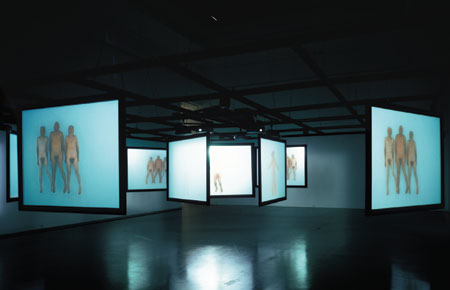
Photo:
Tom Altany
Katarzyna
Kozyra
Stravinsky’s ballet The Rite of Spring
was scandalous at its 1913 premiere. It’s
no surprise that video artist Katarzyna Kozyra
chose that work, with its primitive eroticism,
to set the stage for her video installation
of the same name. Armstrong believes this work,
featuring older adults “au natural”
and moving to a stylized choreography, will
be popular among older viewers because it shows
a rare glimpse of seniors in the context of
ecstasy.
_________________________________________________________________
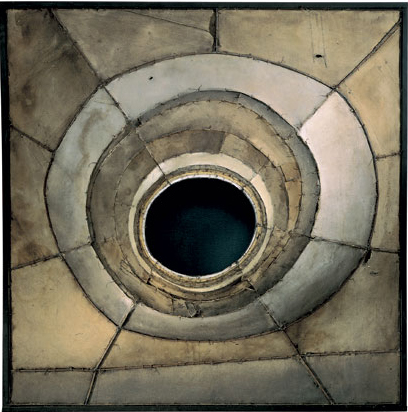
Lee
Bontecou
Sculptures and drawings spanning Lee Bontecou’s
career (from the 1960s through the present)
are beautifully juxtaposed in a retrospective
show, one of three small monographic exhibitions
in this year’s International.
Armstrong says that the evolution of Bontecou’s
work can be seen in her continuing creation
of metal and wire structures covered in fabric,
even though the earlier works are weighty and
forbidding, while the more recent sculptures
have a delicate airiness.
_________________________________________________________________
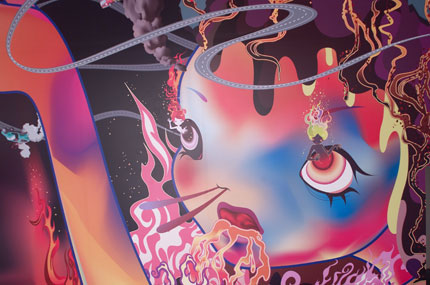
Photo:
Tom Altany
Chiho
Aoshima
The computer-generated, animé-inspired
mural by Japanese artist Chiho Aoshima creates
a fantasy world informed by the traditional
Japanese themes of tidal waves and fire engulfing
the world, according to Armstrong, who calls
the mural “apocalyptic and cathartic.”
Magma Spirit Explodes. Tsunami Is Dreadful
is 40-feet of brilliant color and masterful
illustration, all created in Adobe Illustrator.
_________________________________________________________________
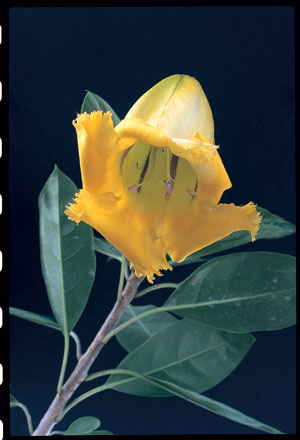
Carsten
Höller
Biologist/artist Carsten Höller explores
the nature of love with his Solandra Greenhouse
(shown on page 8), filled with the flowering
Solandra maxima vines, which emit pheromones
purported to cause people to fall in love. Armstrong
says the plants were grown during the past year
at Phipps Conservatory especially for this installation.
Flashing lights add to the sense of disorientation
often felt by individuals as they fall in love.
Visitors are welcome to test Höller’s
theories of amore by taking a stroll through
the greenhouse as they enter the museum.
Back to Contents |